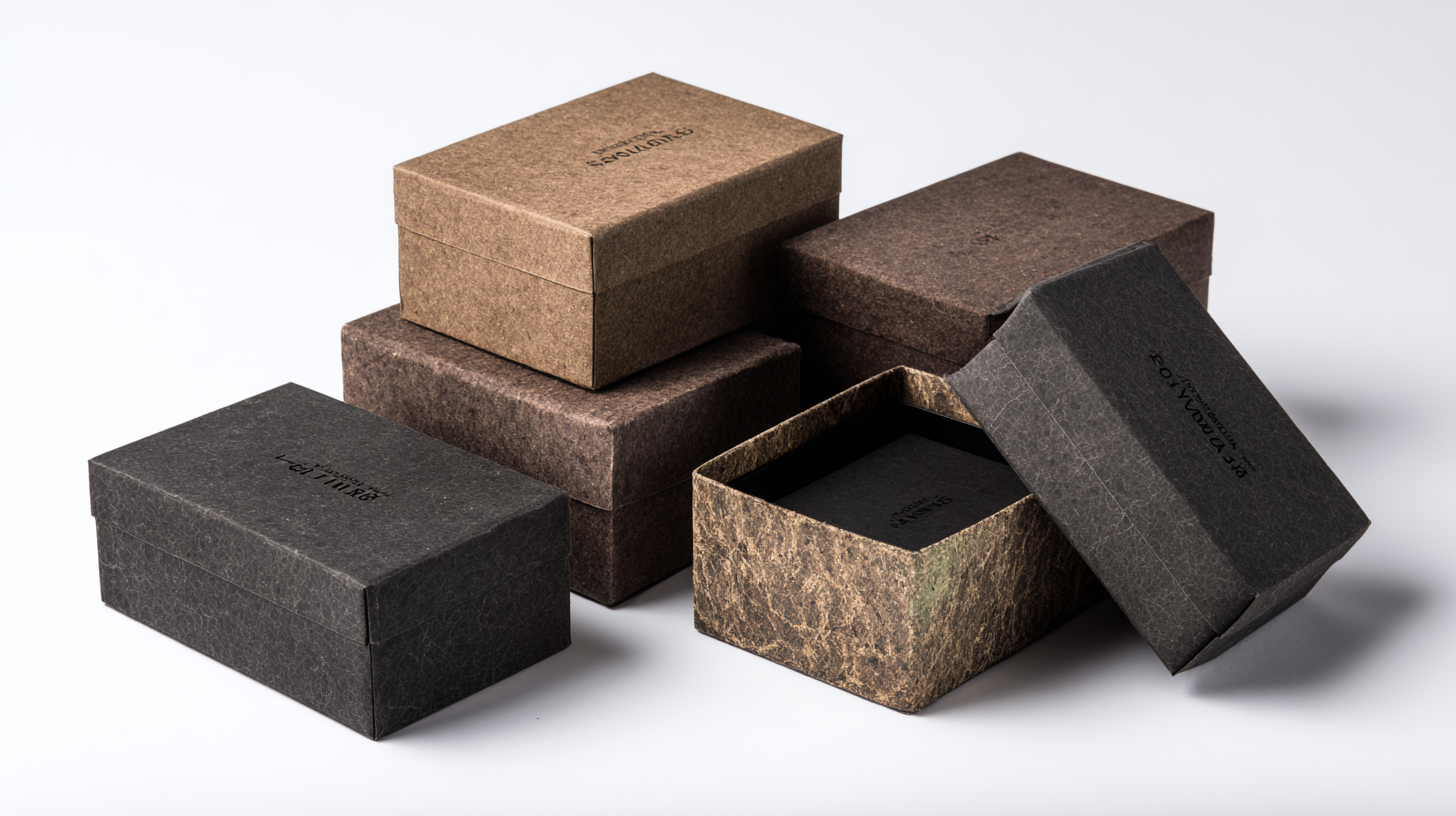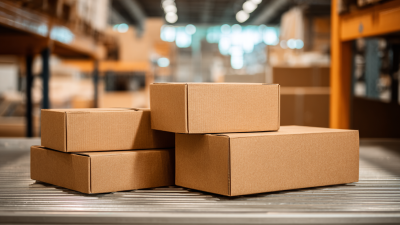Unconventional Design Packaging Boxes Strategies that Boost Brand Recognition by 50 Percent
In an increasingly competitive market, innovative strategies for design packaging boxes are essential for brands looking to enhance recognition and stand out from the crowd. According to a recent study by the Packaging Association, 72% of consumers judge a product by its packaging, highlighting the critical role that effective design plays in consumer perception. Furthermore, a report from the Market Research Institute indicates that brands implementing unconventional packaging designs can see brand recognition increase by as much as 50%. This emphasizes the need for businesses to invest in unique design packaging boxes that not only capture attention but also convey brand identity and values. By leveraging distinctive materials, shapes, and graphics, brands can create memorable unboxing experiences that resonate with consumers, ultimately driving loyalty and sales. Such strategies are no longer mere options but necessary tactics for brands aiming to thrive in today's marketplace.

Innovative Packaging Designs That Captivate Consumers: A Data-Driven Approach
Innovative packaging designs are crucial for capturing consumer attention in today's competitive market. Utilizing cutting-edge digital printing technology, brands can customize their packaging materials by altering elements such as text, graphics, and images within a single print run. This flexibility not only enhances creativity but also ensures that each packaging is tailored to meet specific consumer preferences, ultimately driving brand recognition and loyalty.
The impact of innovative packaging goes beyond aesthetics; brands that adopt these strategies can see substantial growth in their market performance. Insights from neuroscience and artificial intelligence reveal that compelling designs can significantly influence buying decisions, resulting in an average sales increase of 30% in the first year for well-executed products. As brands strive for sustainable growth, embracing unconventional packaging approaches becomes vital, enabling them to stand out and resonate deeply with consumers, thereby reinforcing their market presence.

The Psychology of Color in Packaging: Boosting Brand Recall by Up to 80%
The psychology of color plays a crucial role in packaging design, significantly impacting consumers' perception and recall of a brand. For instance, research shows that colors can evoke different emotions and associations; for example, blue often conveys trust and reliability, while red can elicit excitement and urgency. By strategically selecting colors that align with their brand identity, companies can create a visual link that resonates with their target audience, thereby enhancing brand recognition.
Furthermore, studies indicate that the right color combinations in packaging can boost brand recall by up to 80%. This means that consumers are more likely to remember and choose a product when its packaging effectively utilizes colors that attract attention and communicate the desired message. Brands that understand this psychological aspect can craft packaging that not only stands out on the shelf but also fosters a deeper connection with consumers, leading to increased loyalty and repeat purchases. Ultimately, the thoughtful application of color in packaging design is an essential strategy for brands looking to strengthen their market presence and impact consumer behavior.
Impact of Unconventional Packaging Designs on Brand Recognition
This chart demonstrates the percentage increase in brand recognition based on various unconventional packaging design strategies. Notably, unique shapes and colorful packaging lead to the highest increase in brand recall, highlighting the importance of design in marketing.
Eco-Friendly Packaging Solutions: 60% of Consumers Prefer Sustainable Brands
The shift towards sustainability has become a driving force in consumer preferences, with 60% of consumers now favoring brands that prioritize eco-friendly packaging solutions. This trend reflects a growing awareness of environmental issues and a desire to support businesses that take responsibility for their ecological impact. Brands that adopt sustainable packaging not only appeal to this significant demographic but also distinguish themselves in a crowded marketplace. By utilizing biodegradable materials, recycled cardboard, and innovative designs, companies can resonate more strongly with eco-conscious consumers.
Furthermore, eco-friendly packaging can enhance brand recognition and loyalty. Packaging that communicates sustainability effectively can lead to a positive consumer perception, reinforcing the brand’s commitment to environmental stewardship. A well-designed, sustainable package can serve as a powerful marketing tool, captivating attention on shelves and encouraging consumers to choose one brand over another. As brands implement unconventional design strategies alongside their sustainable practices, they not only boost their visibility but also cultivate a loyal customer base that values green initiatives. This alignment of values between consumers and brands contributes to a holistic approach to marketing that emphasizes both recognition and responsibility.
Unconventional Design Packaging Boxes Strategies that Boost Brand Recognition by 50 Percent - Eco-Friendly Packaging Solutions: 60% of Consumers Prefer Sustainable Brands
| Strategy | Brand Recognition Increase (%) | Consumer Preference for Sustainability (%) | Cost of Eco-Friendly Packaging ($) |
|---|---|---|---|
| Unique Shapes | 50 | 60 | 2.50 |
| Minimalistic Design | 40 | 65 | 2.00 |
| Personalized Packaging | 55 | 58 | 3.00 |
| Interactive Elements | 45 | 62 | 3.50 |
| Recyclable Materials | 50 | 60 | 2.80 |
Experiential Packaging: Enhancing Brand Interaction and Recognition by 50%
Experiential packaging is transforming the way brands engage with consumers, driving a remarkable 50% increase in brand recognition. According to a report by Nielsen, 60% of consumers feel more positively about brands that provide unique packaging experiences. This innovative strategy goes beyond traditional design; it encourages interaction, creating memorable moments that resonate with consumers long after the product is unwrapped.
One of the key aspects of experiential packaging is its ability to create a multisensory experience. Research from the Packaging Industry Association indicates that products with interactive features, such as augmented reality or tactile elements, can enhance customer engagement significantly. When customers actively participate in their unboxing experience, they are not just passive recipients but become storytellers, sharing their experiences through social media, which amplifies brand visibility. Statistics reveal that 79% of consumers are likely to share memorable unboxing experiences online, further extending the reach of the brand’s messaging.

The Power of Personalization: Custom Packaging Strategies Increasing Customer Loyalty by 35%
In today's competitive market, personalization has emerged as a vital strategy for brands seeking to enhance customer loyalty. By embracing custom packaging techniques, companies can forge deeper connections with their audience. Personalized packaging speaks directly to consumers, making them feel valued and recognized. Whether through unique designs, tailored messages, or even the incorporation of customer names, such attention to detail transforms a simple unboxing experience into a memorable moment.
Moreover, personalized packaging not only elevates brand perception but also encourages repeat purchases. When customers feel an emotional connection to a product, they are more likely to return for future purchases. This sense of loyalty can be significantly amplified when the packaging reflects their personal preferences and lifestyles. Brands that successfully implement these strategies often see an increase in repeat business, showcasing the tangible benefits of investing in customized packaging solutions.
Related Posts
-

Unlocking Opportunities: Creative Packaging Boxes at China Import and Export Fair 2025
-

Why Creative Boxes Are Revolutionizing Packaging in the E Commerce Industry
-

Transform Your Brand with Unique Design Packaging Boxes That Stand Out
-

Transforming Commerce: The Rise of Innovative Packaging Boxes in E-commerce Fulfillment
-

How to Choose the Right Boxes Supplies for Your Business Needs
-

Emerging Trends in Packaging Supplies Boxes at the 2025 China Import and Export Fair by Industry Analysis
